The Vietnam Veterans Memorial is one of the most popular memorials in Washington DC. This memorial is a tribute to a controversial war.
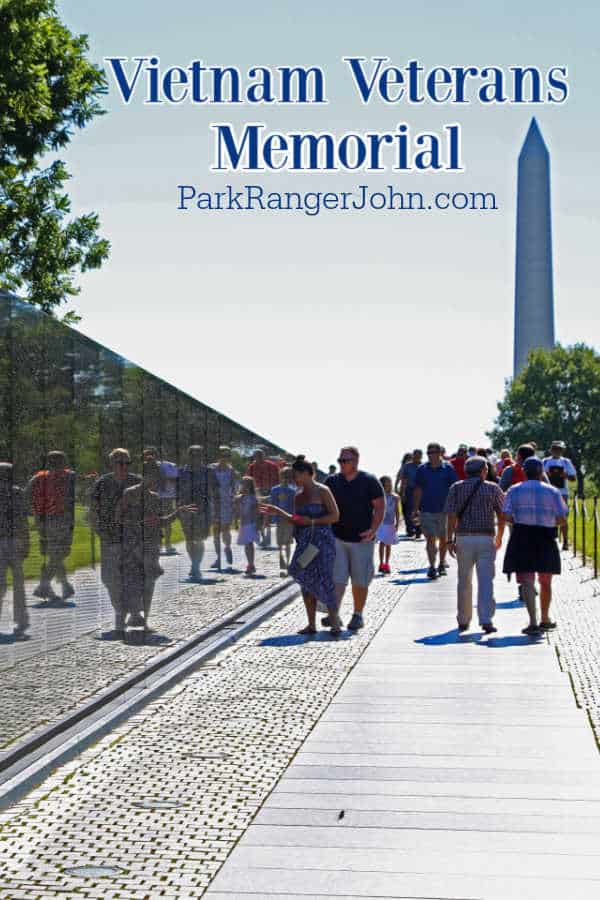
Vietnam Veterans Memorial
The Vietnam War of the 1960s and 70s saw more than 58,000 American military personnel killed while serving in the war zone.
About Vietnam Veterans Memorial
The Vietnam Veterans Memorial Wall was dedicated in 1982. It is a V-shaped polished black granite wall that runs 246 feet long. Names of all who died in the war or who are listed as missing in action are displayed on the wall.
It was designed by Maya Lin who at the time was a student at Yale University. She won a design competition with her memorial design. Maya Lin said, "The names would become the memorial."
She designed the wall so to allow everyone to respond and remember.
Initially, the wall led to some controversy because people felt it was abstract. The Three Soldiers were added facing the wall but at a distance to not intrude on the design of the memorial wall.
The memorial wall is what most people think of when they think of the Vietnam War Memorial in Washington DC.
How Many Names are on the Vietnam War Memorial?
58,318 names are inscribed on the wall as of Memorial Day 2017 including 10 additional names that were added in 2010.
Approximately 1200 of these are listed as missing (MIA's, POW's, and others)
How Do you Find a Name on the Vietnam War Memorial?
The names are listed in chronological order based on the date of casualty, and within each day, names are shown in alphabetical order.
To help locate a relative or name make sure to search the Vietnam Veterans Memorial Fund’s Virtual Wall before you head to the park.
You can also look at the printed registries available at the memorial which are organized alphabetically by last name.
When was the Vietnam War Memorial Built?
On March 11, 1982, the design and plans received final Federal approval.
Work at the site was begun on March 16, 1982, with groundbreaking taking place on March 26, 1982.
The Gilbane Building Company acted as the general contractor, and the architectural firm of Cooper-Lecky Partnership supervised the construction.
The Memorial Wall was completed in late October and dedicated on November 13, 1982, after a week-long salute to Vietnam veterans.
What Happens to items left at the Memorial Wall?
National Park Service staff collect the items and if they are non-perishable they are archived in a storage facility.
While the archive is not open to the public you can visit the Items Left at The Wall virtual collection of nearly 500 items left at the Vietnam Veterans Memorial that can be seen at www.vvmf.org/items.
Is Vietnam Veterans Memorial worth visiting?
Yes, The memorial pays tribute to the armed forces who fought in the Vietnam War and lost their lives.
The memorial is an opportunity to pause and reflect on not only the Vietnam War but conflicts that are happening today.
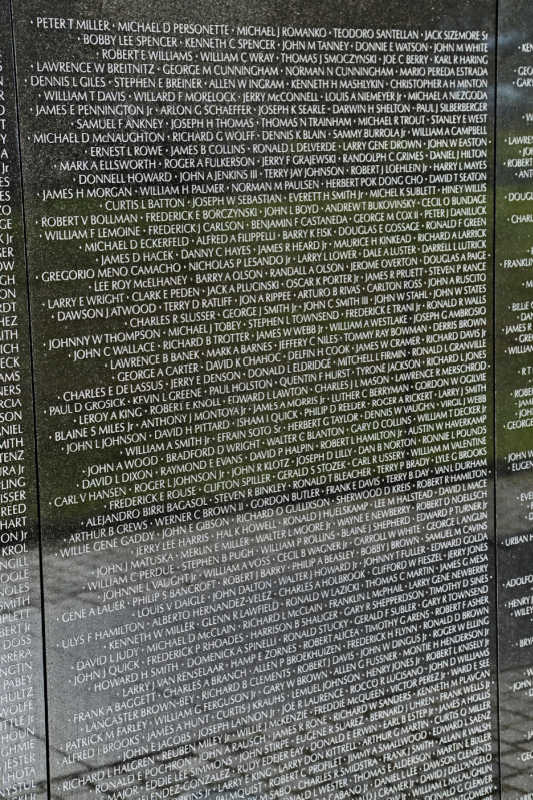
History of Vietnam Veterans Memorial
The Vietnam Veterans Memorial honors 58 320 men and women that were either killed or reported missing in action during the Vietnam War.
The Vietnam War was a particularly turbulent period for America, beginning in 1954 with American involvement and ending in 1973.
Vietnam became a battleground during the Cold War era, where two ideologies fought for superiority.
The Vietnam War was a conflict between the North Vietnamese communists and the South Vietnamese democratic governments. The involvement of both government's allies made it a theater where the Cold War tensions played out in a proxy war.
The Vietnam War divided the American people and was a deeply unpopular conflict. It was an expensive endeavor, with a high death toll.
For the first time, images of the dead and wounded were broadcast on television, bringing the Vietnam War directly into Americans' homes. Anti-war protests ignited a cultural change in America, with the Hippie Movement, and influenced the start of the Civil Rights Movement.
To understand why the US became involved in Vietnam, we have to look at how the conflict started and the politics of a post World War II world.
The World After World War II
After World War II, the world order began to shift. Colonies no longer wanted to be under foreign rule. A power vacuum had opened, one both the Soviet Union and the United States wanted to fill.
The Cold War began, and what has been termed the ‘Iron Curtain’ fell, separating the West's democratic ideology from the Communist East.
Vietnam was a French colony invaded by Japan during WWII. In response to the occupation, fierce resistance headed by Ho Chi Minh called the Viet Minh.
The Viet Minh, inspired by the communist governments of China and the USSR, also received the support of Soviet president Joseph Stalin and Chinese president Mao Zedong.
Defeated, Japan withdrew from Vietnam, leaving the Colonial Emperor, Bao Dai in charge. The Viet Minh quickly took control of Hanoi in the North of the country. The French response was to set up a separate government headed by Bao Dai in Saigon in the South in 1949.
North vs. South
The Viet Minh and the French-backed Southern Vietnamese forces clashed from 1949. In 1954 the Viet Minh successfully ended French Colonial rule of the country.
The country was split down the 17th Parallel with Ho Chi Minh in control of the North and the South controlled by Hgo Dinh Diem, who had pushed Boa out.
Diem was aggressive and oppressive in his rule of the South with his hunt for members of the Viet Minh or Viet Cong as the communist forces became known. It was not long before opposition to Diem began with the formation of the National Liberation Front, or the NFL started to fight back against Diem from within the South.
America and the West watched the conflict in Vietnam closely. The Cold War was ramping up, with tensions between the USSR and the USA worsening. The West feared that if Vietnam became a Communist nation, many other countries in the region would follow suit. This fear was called the Domino Theory.
American Involvement
American President John F. Kennedy sent aid to Diem's government to help him combat the communist threats but did not commit to US military involvement. Active US engagement did not begin until 1964, after Kennedy's assassination, when the Viet Cong attacked two US warships in the Gulf of Tonkin.
With President Johnson at the helm, Operation Rolling Thunder began. The US began a relentless bombing campaign targeting Viet Cong military targets as well as targets in neighboring countries. The aim was to disrupt Ho Chi Minh's supply line, the Ho Chi Minh Trail. The campaign also aimed to ensure none of the other country's Communist elements made progress.
In 1965, amidst growing tensions and fears surrounding the threat Communism posed to the free world and more ‘wars of liberation’ beginning, Johnson authorized the deployment and engagement of US Troops in Vietnam.
The Vietnam War
The Americans believed that with their superior firepower and numbers that they would be able to win against the Viet Cong. The American's tactic was to inflict heavy losses on the Viet Cong until they could no longer replace the lost troops.
The fighting of the Vietnam War took place in dense jungles, which required a different type of warfare. Meaning that the superior numbers of the US amounted to little because they had to be split into smaller units to maneuver through the jungle and villages.
The Viet Cong excelled in guerilla warfare and waged a psychological war on the US troops using booby traps, snipers, and mines.
They terrorized the American soldiers. Although the Viet Cong were seemingly making progress against the South and the US, it was not enough. The Viet Cong launched the Tet Offensive.
The Tet Offensive was a series of coordinated surprise attacks in the cities and basses of Southern Vietnam by the Viet Cong. Although the offensive failed from a military perspective, it won at breaking the US morale and further turned the American public opinion against the war.
Nixon and Vietnamization
By 1969 after the Tet Offensive, the US could not send more troops to Vietnam. Nixon knew that the US could not win, especially without sending more troops.
Nixon, to appease the American public after the outcry from the Tet Offensive and later the My Lai Massacre introduced the Vietnamization Policy. The anti-war movement gained momentum after the Tet Offensive, with 250 000 people marching in Washington to protest the war.
Vietnamization changed the role of the American forces in the war. Rather than run the show, they would be training the Southern Vietnamese forces. Vietnamization was how Nixon planned to begin reducing the number of troops in Vietnam and appease the American Public. As of 1969, over 500 000 American troops were in Southern Vietnam.
The End of American Involvement
The fighting continued and intensified despite the Vietnamization policy. The withdrawal of troops had a hugely negative effect on the morale of those left behind.
America eventually withdrew its troops from Vietnam in 1973 after a series of peace talks between North Vietnam and the US. By the time America withdrew its troops, over 2.7 million Americans had served in Vietnam, with over 58 thousand dead.
The Vietnam War was costly, unpopular, and divided the American population. The repercussions of the Vietnam War would continue to be felt for years as American Servicemen fought to come to terms with the horrors of the guerilla war tactics used by the Viet Cong.
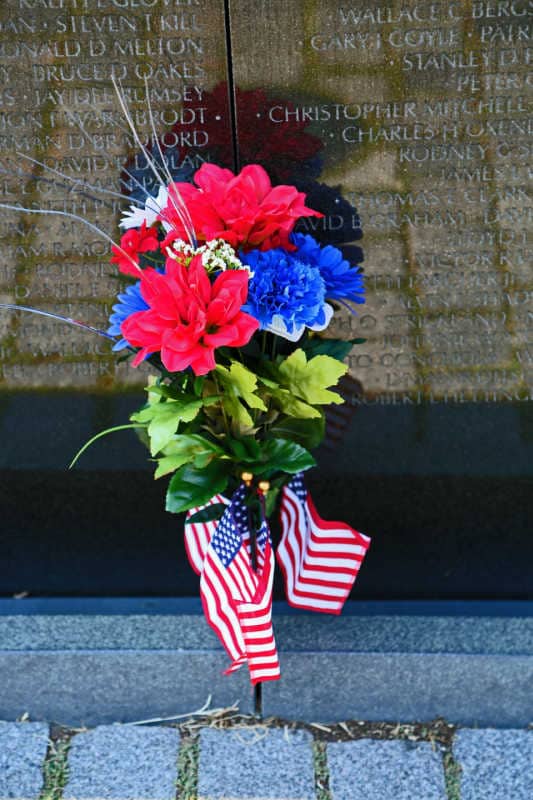
Things to know before your visit to Vietnam Veterans Memorial
Entrance fee
$0.00 - There is no fee to visit the memorial
Learn more about National Park Passes for parks that have an entrance fee.
$80.00 - For the America the Beautiful/National Park Pass. The pass covers entrance fees to all US National Park Sites and over 2,000 Federal Recreation Fee Sites for an entire year and covers everyone in the car for per-vehicle sites and up to 4 adults for per-person sites.

Buy your pass at this link, and REI will donate 10% of pass proceeds to the National Forest Foundation, National Park Foundation, and the U.S. Endowment for Forestry & Communities.
National Park Free Entrance Days -Mark your calendars with the five free entrance days the National Park Service offers annually.
Time Zone
EST - Eastern Standard Time
Pets
Leashed pets are allowed on the National Mall. They are not allowed in buildings, the National Sculpture Garden or in most memorials.
Cell Service
Cell Service should be great in Washington DC
Park Hours
The Vietnam Veterans Memorial is open to the public 24 hours a day.
Wi-Fi
WiFi is not available in the park. It is available at nearby coffee shops and hotels.
Insect Repellent
Insect repellent is always a great idea when outdoors, especially if you are around any body of water.
We use Permethrin Spray on our clothes before our park trips.
Water Bottle
Make sure to bring your own water bottle and plenty of water with you. Plastic water bottles are not sold in the park.
Parking
Parking can be difficult to find. Parking is available along Ohio Drive, SW between the Lincoln and Thomas Jefferson Memorials.
There are 1,200 metered parking spaces through the National Mall area provided by the National Park Service.
These parking pay stations accept debit and credit cards. They do not accept cash or coins.
Payment can also be made via the Parkmobile app or website.
Metered parking can be found:
- Constitution Avenue NW between 15th Street NW and 23rd Street NW
- Parkway Drive SW
- Ohio Drive SW in West Potomac Park (between Independence Ave and Inlet Bridge)
- West Basin Drive SW (entire length, between Ohio Drive and Independence Avenue)
- Tidal Basin parking lot (paddle boats)
- Madison Drive NW
- Jefferson Drive SW
- Lots A, B, and C on Ohio Drive SW (East Potomac Park)
- Lot on Buckeye Drive (adjacent to tennis courts)
There are 300 free parking spaces at Hains Point within East Potomac Park.
Accessible parking spaces are available for vehicles displaying disability parking permits, placards, and vehicle tags. In the areas where a parking fee is being charged visitors will need to pay for the accessible parking spaces.
Motorcycles can park in lots A, B, C areas off of Ohio Drive.
Food/Restaurants
There are no restaurants within the park.
Gas
There are no gas stations within the park.
Drones
Drones are not permitted within National Park Sites.
National Park Passport Stamps
National Park Passport stamps can be found in the visitor center.
Make sure to bring your National Park Passport Book with you or we like to pack these circle stickers so we don't have to bring our entire book with us.
The Vietnam Veterans Memorial is part of the 1994 Passport Stamp Set.
Electric Vehicle Charging
There are 500 public EV Charging Stations in Washington DC (Level 2 and Level 3)
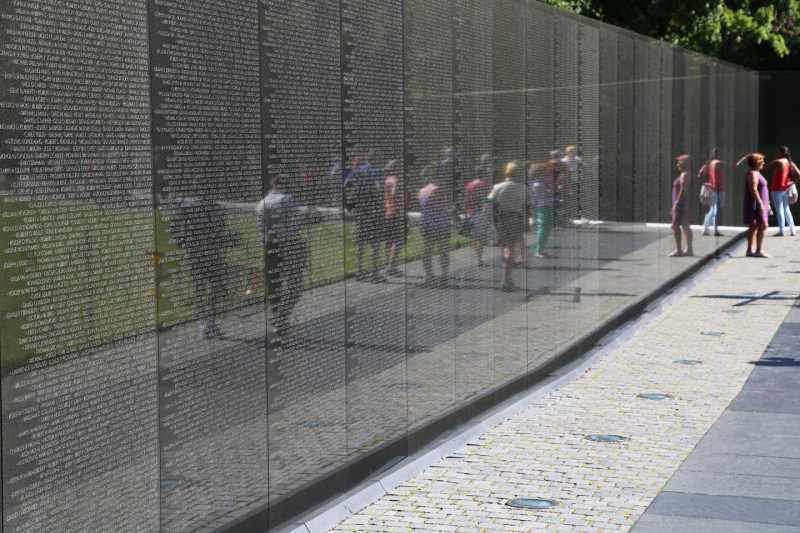
Details about Vietnam Veterans Memorial
Size - 2.8 acres
The memorial is one of the smallest National Parks by Size.
Date Established
November 13, 1982
Visitation
In 2021, the Vietnam Veterans Memorial had 3,636,033 park visitors.
In 2020, the Vietnam Veterans Memorial had 1,585,525 park visitors.
In 2019, the Vietnam Veterans Memorial had 4,580,587 park visitors.
Learn more about the most visited and least visited National Parks in the US
National Park Address
5 Henry Bacon Drive NW
Washington, DC 20002
GPS Coordinates: 38.891112, -77.047626
Vietnam Veterans Memorial Map

There are great walking maps for Washington DC that offers information on a street and site by site basis.
We have used these popout maps before. They are small and easy to carry with you.
There is also a National Geographic Destination City Map available on Amazon.
Wandering the National Mall is one of the best things to do in Washington DC with kids. There is so much history and truly amazing museums to visit.
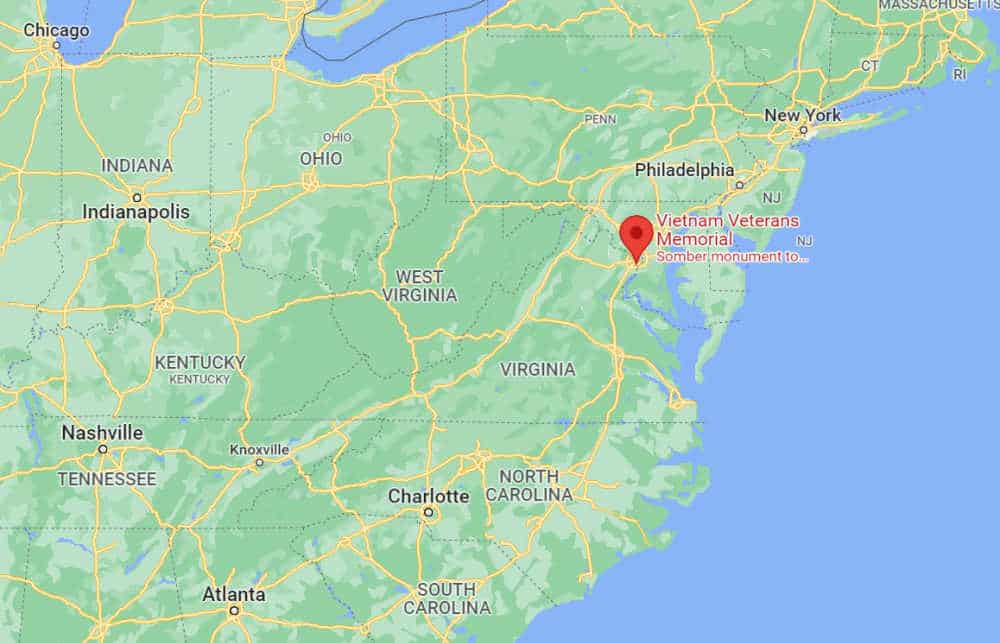
Where is the Vietnam Veterans Memorial?
The memorial is located near Constitution Gardens on the National Mall in Washington DC
The Vietnam Veterans Memorial is located on the National Mall along Constitution Avenue NW between 21st and 23rd streets.
Estimated distance from major cities nearby
Baltimore, MD - 41 miles
Philadelphia, PA - 142 miles
Norfolk, VA - 199 miles
Virginia Beach, VA - 206 miles
Pittsburgh, PA - 245 miles
Newark, NJ - 220 miles
Jersey City, NJ - 226 miles
New York, NY - 229 miles
Estimated Distance from nearby National Park
Shenandoah National Park - 69 miles
New River Gorge National Park - 293 miles
Mammoth Cave National Park - 674 miles
Congaree National Park - 481 miles
Acadia National Park - 710 miles
Cuyahoga Valley National Park - 349 miles
Indiana Dunes National Park - 656 miles
Where is the National Park Visitor Center?
Rangers are on duty to answer questions from 9:30 am to 10:00 pm daily. They provide interpretive programs throughout the day and upon request.
Getting to Vietnam Veterans Memorial
Closest Airports
Ronald Reagan Washington National Airport
Washington Dulles International Airport
International Airports
Baltimore Washington International Thurgood Marshall Airport
Driving Directions
From the South - Interstate 395 provides access to the National Mall and Memorial Parks.
From the North - Interstate 495, New York Avenue, Rock Creek, and the Potomac Parkway, George Washington Memorial Parkway, and the Cabin John Parkway provide access.
From the West - Interstate 66, US Route 50, and US Route 29 provide access.
From the East - US Route 50, 1, and 4 provide access.
Public Transportation
Public Transportation is a great way to visit the parks. There are multiple options including the DC Subway System (Metro), or the DC Circulator Bus.
The closest Metro stops are Foggy Bottom or Federal Triangle on the Orange, Blue, and Silver lines.
On Off Bus Tour
One of our favorite ways to explore Washington DC is on an On Off Bus Tour.
This is the perfect way to let someone else do the driving. Plus, you can sit on the top deck and get epic pictures while riding around the city.
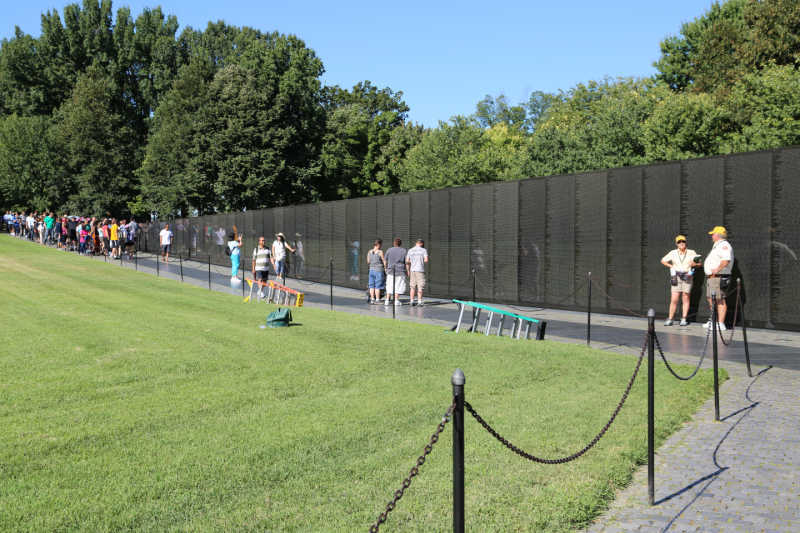
Best time to visit Vietnam Veterans Memorial
The best time to visit Washington DC is June and then Mid August to early October. The weather should be nice without being crazy muggy or hot.
Weather and Seasons
Summers are warm and muggy in Washington DC while winters are super cold and snowy.
The hottest weather is from May 30 to September 16th when the average daily temperature is above 79 degrees.
The coldest weather is from December 1st to March 4th with an average temperature below 52 degrees.
The coldest month is January. May gets the most rain with an average of 3.5 inches.
February gets the most snow with an average of 5.4 inches.
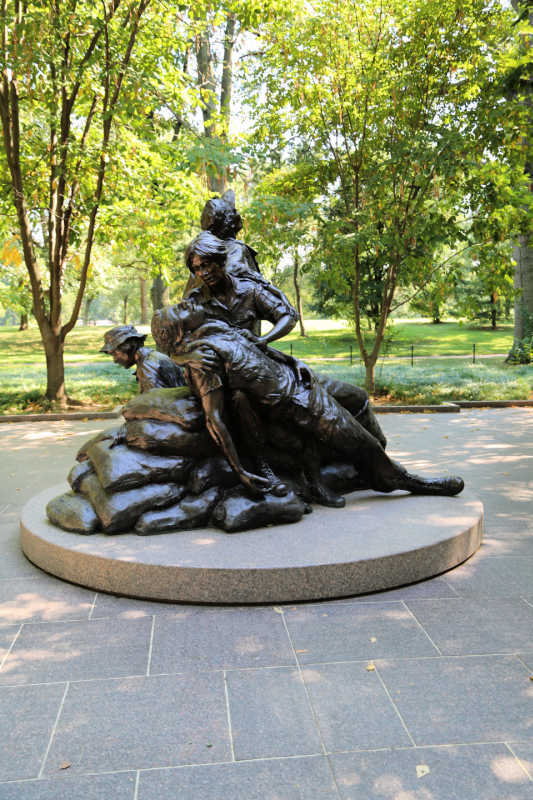
Best Things to do in Vietnam Veterans Memorial
There are three main things to see at the Vietnam Veterans Memorial Wall including the memorial wall, Vietnam Women's Memorial, and the Three Servicemen Statue.
Vietnam Women's Memorial
The Vietnam Women's Memorial is the first memorial in Washington, D.C. honoring women's military service.
Located just north of the Reflecting Pool. In 1993 the Vietnam Women's Memorial was unveiled. The memorial portrays three women caring for a fallen soldier.
This memorial was created to honor women who served and risked their lives for their country.
Three Soldiers Statue
The Three Soldiers State is also known as The Three Servicemen. It was placed close to the memorial wall after there were complaints the memorial wall was to abstract.
Junior Ranger Program
There National Mall and Memorial Parks are all part of the same Junior Ranger program.
Guided Tours
A great way to visit the Vietnam Veterans Memorial and other park sites is on a guided tour.
This is the perfect way to learn more about the sites without having to worry about driving and parking in town.
Washington DC Full Day Tour - This tour visits the White House, Capitol Building, Thomas Jefferson Memorial and includes a scenic river cruise.
Washington DC Segway Tour - This tour through Washington DC visits more than 25 historic buildings, monuments, and memorials.
6 hour sightseeing tour - This 6 hour tour includes a boat cruise on the Potamic River during the summer.
Brunch or Dinner Cruise - Enjoy the ultimate views of Washington DC on a custom designs boat. Savor a delicious plated brunch with mimosas or a gourmet 3-course dinner served at your private table, then relax to the curated background music.
Monuments by Moonlight Nighttime Trolley Tour - Experience the sights of Washington D.C. by night on a guided trolley tour of the city's most popular monuments. Along the way, learn about the fascinating history of the nation's capital.
African American History Tour - Go back in time to some of the most iconic moments of the civil rights movement, with a fascinating African American history tour of Washington, DC.
Big Bus Hop On Hop Off Tour - Explore Washington, DC's famous and historic landmarks with a 24-, 48-, or 72-hour ticket. See the city at your own pace with unlimited access to two hop-on hop-off sightseeing tours
Sightseeing Segway Tour - See the major hot spots in Washington, D.C. on a Segway adventure. Take a ride by the National Mall, Capitol Hill, White House, and Pennsylvania Avenue. Roll by some off-the-beaten-path spots.
There are a ton of tours available in Washington DC! From food tours to ghost tours you can find an amazing tour to enhance your visit.
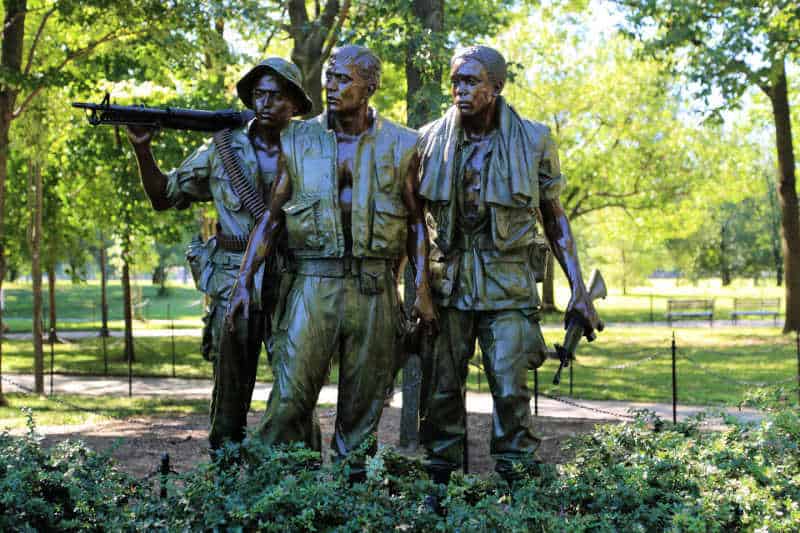
How to beat the crowds at the Vietnam Veterans Memorial?
The best way to beat the crowds is to arrive early in the morning and later in the evening.
Where to stay when visiting Washington DC
There are no National Park Lodges in Washington DC.
Fairmont Washington, D.C - This aparthotel features an indoor pool, a restaurant, and a health club. Other amenities include a bar/lounge, a sauna, and WiFi in public areas. Each apartment offers WiFi, an iPod dock, and an LCD TV with cable channels. Added amenities include 24-hour room service, wired Internet, and premium bedding.
Hilton Washington DC Capitol Hill - 4-star hotel near National Mall. Hilton Washington DC Capitol Hill is located close to Union Station Shopping Center and United States Capitol, and provides dry cleaning/laundry services, a bar, and a gym. Stay connected with free in-room Wi-Fi, and guests can find other amenities such as a conference center and a restaurant.
Riggs Washington DC - 5-star luxury hotel. Close to Walter E. Washington Convention Center and National Museum of African American History and Culture, Riggs Washington DC provides a terrace, a garden, and dry cleaning/laundry services. The onsite American cuisine brasserie, Cafe Riggs, features brunch and light fare. Stay connected with free in-room Wi-Fi, and guests can find other amenities such as a bar and a 24-hour health club.
Courtyard by Marriott Washington, DC - Located in Washington (Foggy Bottom), Courtyard by Marriott Washington, DC/Foggy Bottom is within a 15-minute walk of George Washington University and Vietnam Veterans Memorial. This hotel is 0.6 mi (1 km) from White House and 0.7 mi (1.1 km) from Lincoln Memorial.
Holiday Inn Washington-Central/White House - Close to Walter E. Washington Convention Center and George Washington University, Holiday Inn Washington-Central/White House, an IHG Hotel provides shopping on site, an arcade/game room, and dry cleaning/laundry services. Be sure to enjoy a meal at Johnny Rockets Restaurant, the onsite restaurant. In addition to a bar and a gym, guests can connect to free in-room Wi-Fi.
Click on the map below to see current rates for vacation rentals and hotels in Washington DC and surrounding area.
Camping near Washington DC
There are no National Park Campgrounds near the memorial.

For a fun adventure check out Escape Campervans. These campervans have built in beds, kitchen area with refrigerators, and more. You can have them fully set up with kitchen supplies, bedding, and other fun extras. They are painted with epic designs you can't miss!
Escape Campervans has offices in Vancouver, Seattle, Portland, San Francisco, Las Vegas, Los Angeles, Phoenix, Salt Lake City, Denver, New York, and Orlando
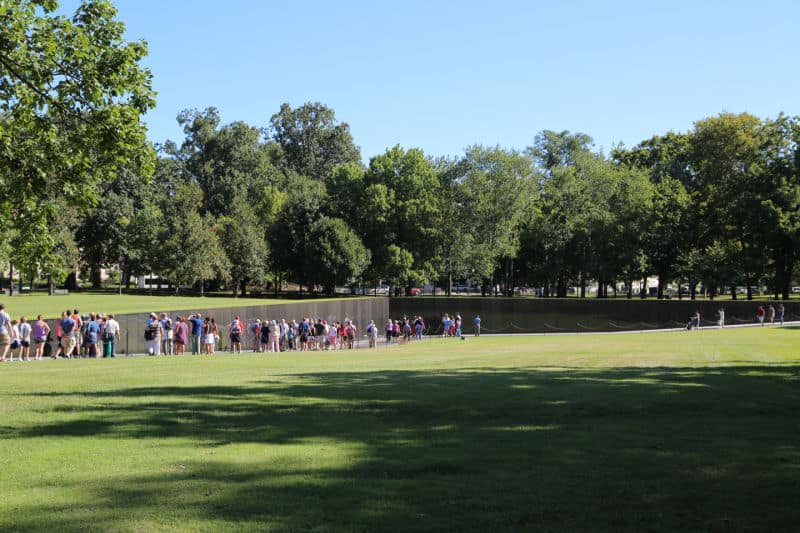
Additional Resources
The Vietnam War, A film by Ken Burns
Vietnam: An Epic Tragedy, 1945-1975
The Vietnam War: The Definitive Illustrated History
Secret Washington DC: A Guide to the Weird, Wonderful, and Obscure
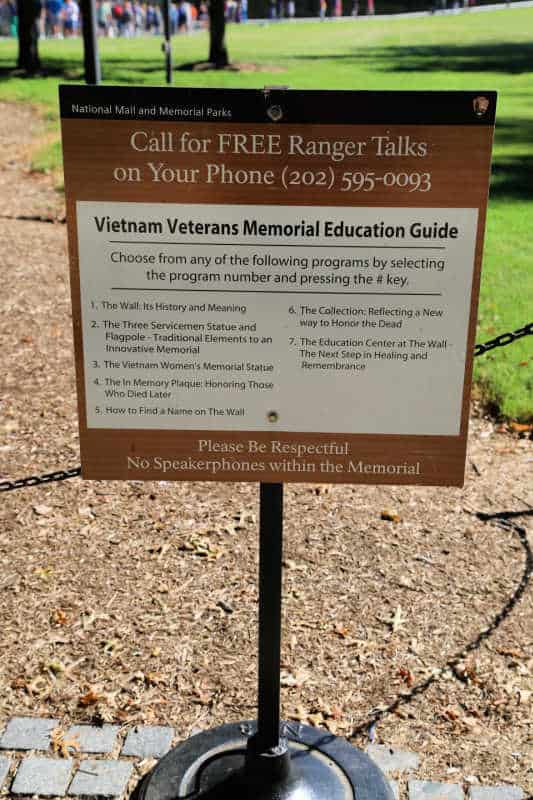
Parks Near Vietnam Veterans Memorial
Martin Luther King Jr. Memorial
Franklin Delano Roosevelt Memorial
Washington Monument
Check out all of the National Parks in Washington DC
Check out all of the National Parks in Virginia along with National Parks in Kentucky, National Parks in Maryland, National Parks in North Carolina, Tennessee National Parks, and West Virginia National Parks
Check out all of the US National Memorials
Make sure to follow Park Ranger John on Facebook, Instagram, Pinterest, and TikTok





Leave a Reply